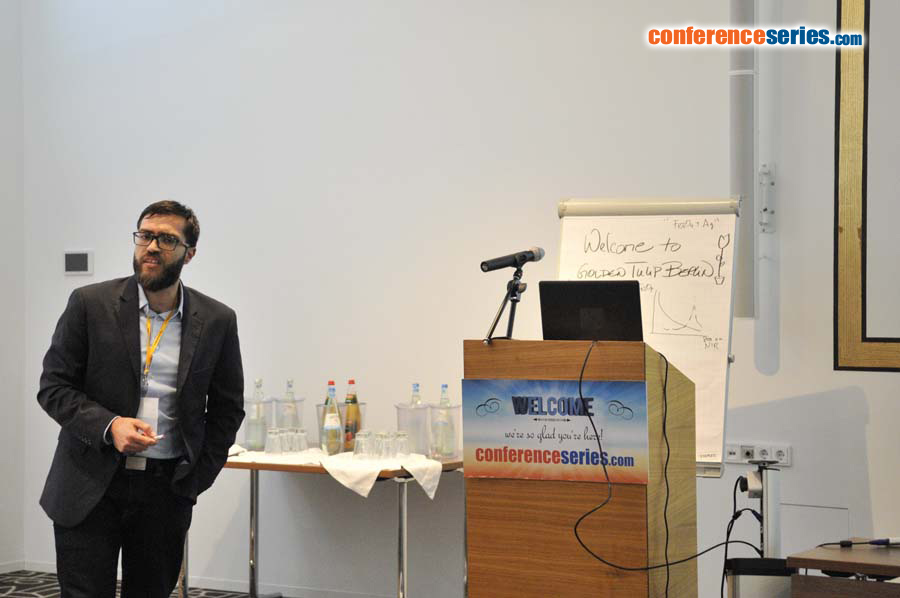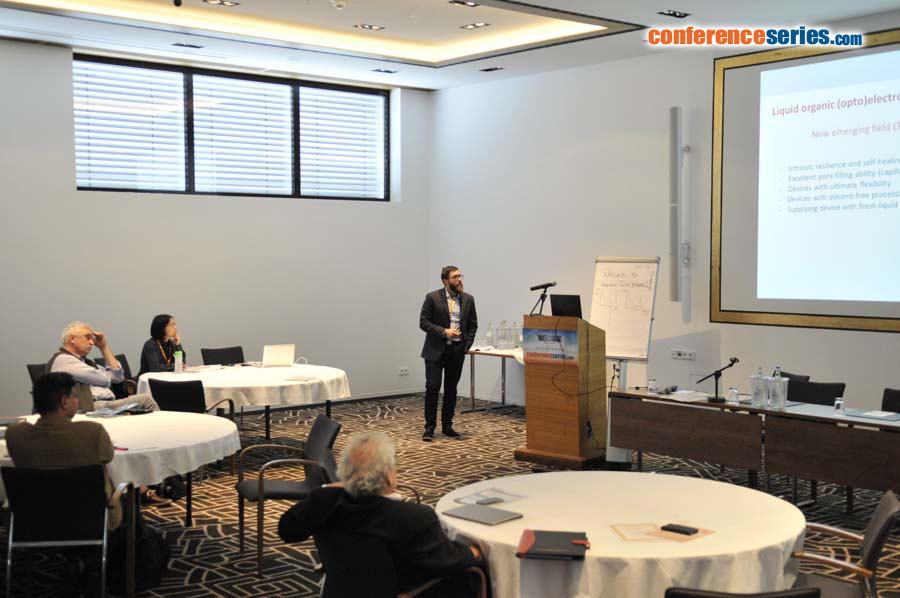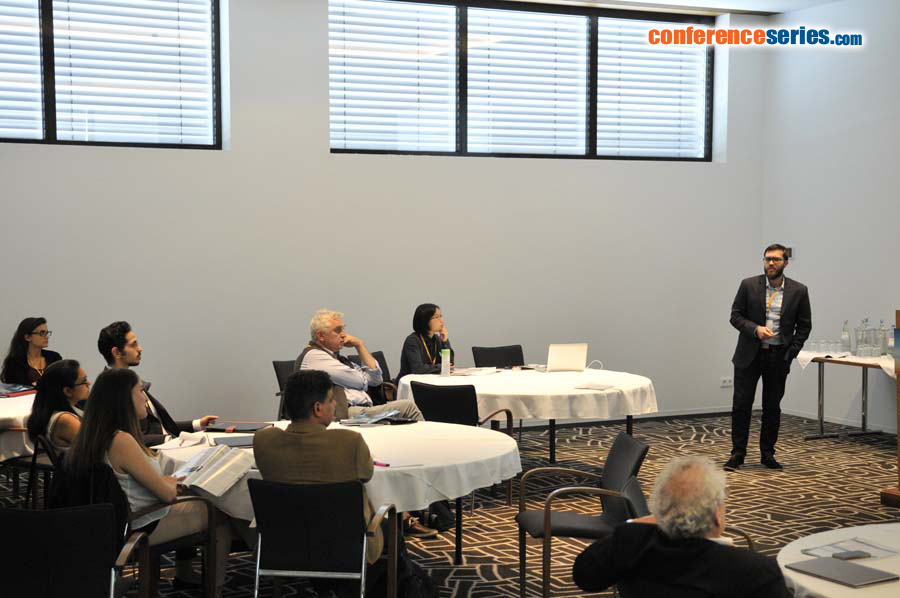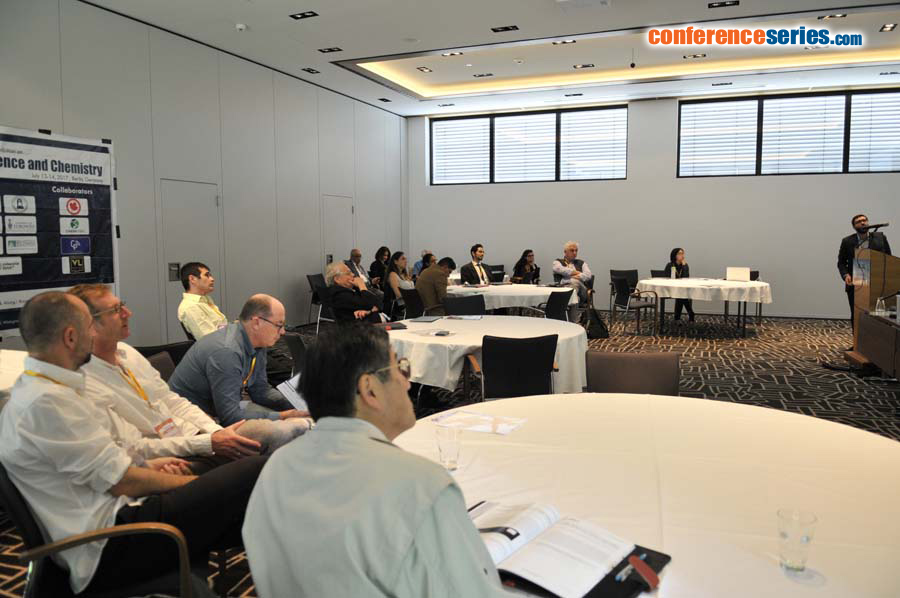
Biography
Biography: Janah Shaya
Abstract
Liquid optoelectronics has recently emerged as a new research field aiming to the perspective of ultimate flexible and stretchable devices. Non-volatile liquid optoelectronic materials present several advantages over conventional solid-state ones such as: solvent-free processing, intrinsic resilience, excellent pore filling ability and possibility to compensate for the degradation (via microfluidic technology), by supplying the device with fresh liquid. In this line, we have reported a powerful procedure to confer large aromatic species with a liquid state at room temperature, through a convenient siloxane chain functionalization. The first results obtained in a series of oligofluorene led to solvent-free liquid compounds that exhibit both remarkable charge transport properties and strong fluorescence. The materials were found to exhibit ambipolar charge transport properties (hole- and electron-transport) with mobilities of about 10-4 cm2/Vs, i.e., a value comparable to the one of the best solid-state amorphous glasses used in various optoelectronic applications (photovoltaics, OLEDs, etc.). In parallel, thanks to an extremely low threshold amplified stimulated emission (<2 mJ/cm2) and high quantum yield (PLQY>80%), these materials successfully led to the first demonstration of a distributed feedback (DFB) laser in a monolithic liquid semiconductor. Overall, these results demonstrate that solvent-free liquid organic semiconductors functionalized by siloxane segments can compete in terms of photophysical and charge transport properties with organic glassy semiconductors, thus paving the way for the development of liquid optoelectronic devices. As a second part and based on the prospective results on the fluorenes, we investigated efficient metal-catalyzed methodologies to synthesize liquid hosts at room temperature based on carbazole-biphenyl derivatives. The new characterized liquid semiconductors and their characterization are currently under submission.
Photograph (at ambient and under UV light) of the strongly luminescent oligofluorene derivative functionalized with short siloxane chains, showing nonvolatile and stable liquid state at room-temperature. Graph (right) showing the temperature dependence of the ambipolar charge transport mobility, with typical recorded ToF signal in the insert.






